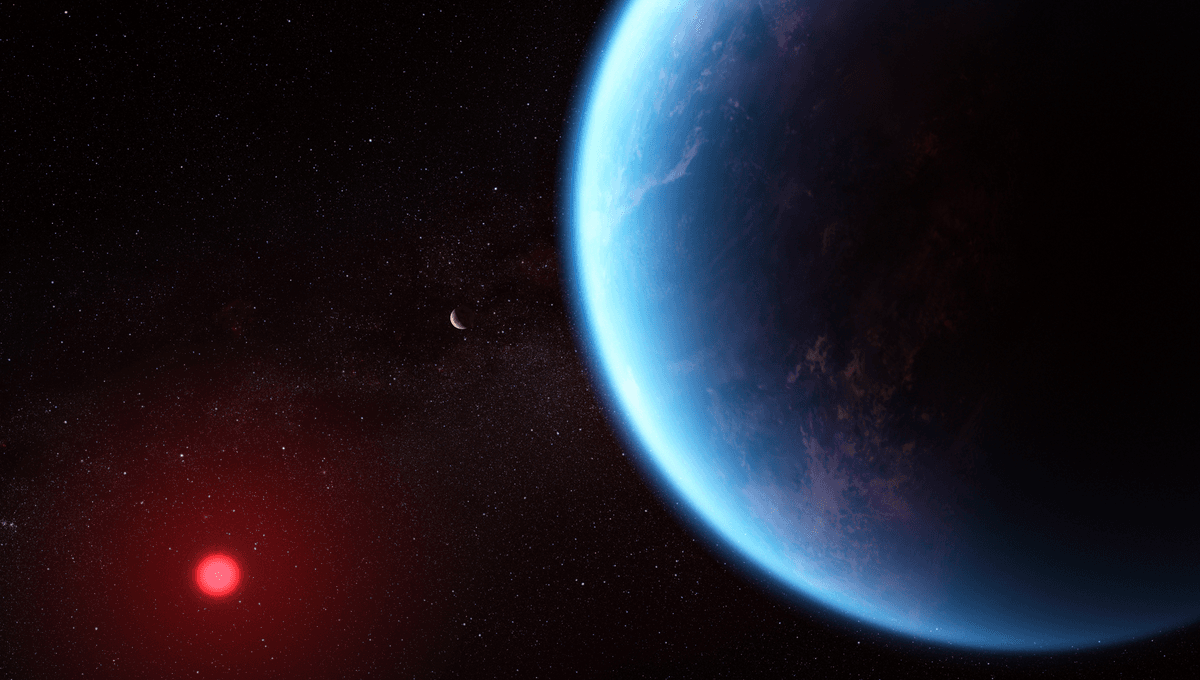Imagine a distant planet, K2-18b, orbiting its parental star 124 light years away. Every time it passes in front of its star, a unique phenomenon occurs. The star’s light shines through K2-18b’s atmosphere, revealing its composition. This incredible process allows scientists to detect the presence of different gases by analyzing the specific wavelengths of light that are blocked.
The James Webb Space Telescope (JWST) has recently made groundbreaking discoveries about K2-18b. By examining its atmospheric fingerprint, the JWST has confirmed the presence of methane and carbon dioxide, in addition to the previously identified water. However, there is still uncertainty surrounding the detection of another gas, dimethyl sulfide, due to overlapping absorption wavelengths.
But there is hope for a clearer understanding. Each time K2-18b transits its star, more light can be collected, providing additional opportunities for observation. By combining these observations, scientists can potentially enhance the signal and gain deeper insights. In fact, the JWST’s analysis of just two transits is equivalent to eight transits observed by the Hubble Space Telescope.
Despite its scientific significance, K2-18b desperately needs a catchier name. Its current designation, EPIC 201912552 b, is far from memorable. Nevertheless, astronomers are captivated by this planet’s unique qualities. Discovered by the extended Kepler mission, K2-18b has been marked as something special, leading the JWST to prioritize its study.
K2-18b is an intriguing world with a radius 2.6 times that of Earth and a mass 8.6 times greater. It falls between the density of a rocky planet and a gas giant like Neptune. The planet is believed to be covered in water, surrounded by a thick hydrogen-rich atmosphere. Astronomers have coined the term “Hycean” (Hydrogen-ocean) to describe this class of planets, which may offer better chances of finding signs of life in their atmospheres compared to more Earth-like worlds. K2-18b is considered the first likely Hycean planet, although the existence of its ocean has been speculative until now.
Scientists predicted that Hycean planets should have methane and carbon dioxide in their atmospheres, but little to no ammonia. The JWST’s findings align with these predictions, suggesting that K2-18b is well-suited for supporting life. However, to confirm the presence of biology, scientists will need to discover more exotic molecules, with dimethyl sulfide being one of the most promising candidates.

“Although this kind of planet does not exist in our solar system, sub-Neptunes are the most common type of planet known so far in the galaxy,” stated Dr. Subhajit Sarkar of Cardiff University. The JWST has provided the most detailed spectrum of a habitable-zone sub-Neptune to date, allowing scientists to identify the molecules present in its atmosphere.
In 2019, Hubble detected signs of water vapor in K2-18b’s atmosphere, a groundbreaking discovery for a planet with the potential for a liquid ocean. However, progress has been slow due to the longer orbits of habitable zone planets compared to the easily detectable overheated worlds. With a 33-day wait between transits, Hubble faced challenges in gathering enough data. Nevertheless, K2-18b’s significance has led to its inclusion in the JWST’s observation schedule, despite the telescope’s busy agenda.
Professor Nikku Madhusudhan of Cambridge University, the first author of the study, emphasized the ultimate goal of identifying life on a habitable exoplanet. This achievement would revolutionize our understanding of our place in the universe. The recent findings are a promising step towards unraveling the mysteries of Hycean worlds.
The study has been accepted for publication in The Astrophysical Journal Letters, and a preprint is available on ArXiv.org.








